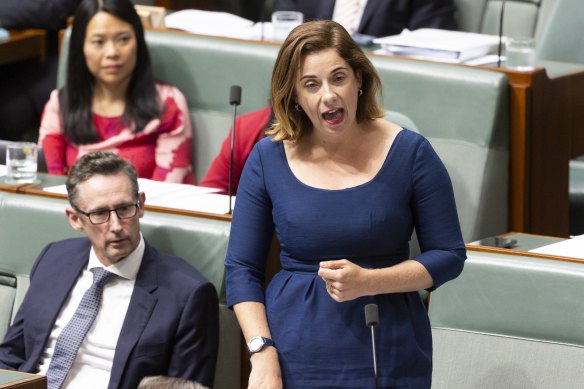Baby Boomers who could afford it would pay at least $20 more a day to cover food and cleaning expenses in nursing homes under a reboot of aged care funding designed to accommodate the rising number of ageing Australians.
An expert taskforce has told the Albanese government that taxpayers should fully cover the care costs of older Australians, such as nursing, medication and allied health. But wealthier people should pay more for the things they have paid for all their lives – such as meals, laundry and accommodation – and draw down their superannuation to do so.

Minister for Aged Care Anika Wells said people were prepared to pay more for aged care if they received quality services.Credit: Alex Ellinghausen
The aged care sector welcomed Tuesday’s report for offering a way out of its sustainability crisis, but some groups expressed concern that allowing wealthy people to pay more would create a two-tiered system. Others feared the taskforce did not go far enough and said the shrinking taxpayer base could not afford to pay the entirety of people’s care costs.
Prime Minister Anthony Albanese on Tuesday said his government would look to long-term solutions as it responded to the report.
“Over the next four decades, the number of Australians aged 65 and over will more than double. The number aged 85 and over will more than triple. And the number of centenarians will increase six-fold ... So, there’s going to be an extraordinary amount of pressure,” he said.
However, the government has already ruled out introducing an aged care levy or changing how the family home is means-tested when determining people’s care fees. Aged Care Minister Anika Wells said those were “red lines” the opposition had expressed, and she wanted to work in a bipartisan way.
Aged care consultant Cam Ansell said the report did not go far enough. “Without changing means testing for the family home, the safety net is too large that most of us are in it,” Ansell said.
People should have been asked to pay more for their care costs, given it was the most expensive part of the system, he added.
“The report does a good job of framing what the problem is: too many old people to the number of young people to pay for it. Then, in the context of sustainability, it does nothing about it.
“Unlike the rest of the world, Australia pays for nearly all of [people’s care costs]. With the taxpayer base shrinking, you can’t keep giving it away for free ... [This retiring generation] is already the wealthiest cohort in history.”
Instead, the report focused on everyday living expenses in residential aged care, which are currently capped at $61 a day – or 85 per cent of the aged pension – despite costing providers about $80.
Taskforce member and aged care consultant Grant Corderoy said getting self-funded retirees to cover the $19 gap – or $7300 more a year – was the logical starting point.
“If you want additional services – alcohol with dinner, hairdressing, over and above the prescribed services – that’s what you negotiate with the provider,” he said.
“One of the arguments I hear is: I pay tax all my life, why should I pay for my aged care? [Your] aged care nurses, medication, allied health are all paid for by the taxpayer.
“[But] everyday living and accommodation has nothing to do with taxes. If you’re living in your own home, you’re paying for those things. If you leave your home, of course you have to pay for that wherever you go.”
Wells said figures about how much more people would pay were still hypothetical: “But in all of the consultation that has been undertaken so far … what people have told us if they’re prepared to pay for a better service if it is a higher quality service.”
Taskforce member Tom Symondson, the chief executive of the Aged and Community Care Providers Association, said people should not be able to get better care or more nursing hours because they can afford to pay. “That would be abhorrent, that’s not something we would support,” he said.
“But maybe you should be able to get Pay TV or a newspaper … when you’ve got the money to do it. And at the moment, that’s very hard in our system because we’re so afraid of looking unequal or unfair.”
Older Persons Advocacy Network policy director Samantha Edmonds said she wanted more detail about how vulnerable people would be protected under safety net provisions. “Transparency of any fees and charges is critical, especially if the government proceeds to make further users pay for their aged care,” she said.
“It is also critically important that we don’t create a two-tiered system, where those who can afford to pay get a first-class service, and those who can’t receive inadequate care.”
Opposition aged care spokeswoman Anne Ruston offered to work with the government but said there were many unanswered questions. “This report has put out there all of the challenges the sector is facing, but there’s very little in terms of any direction as to how we might go about solving them,” she said.
Cut through the noise of federal politics with news, views and expert analysis. Subscribers can sign up to our weekly Inside Politics newsletter.